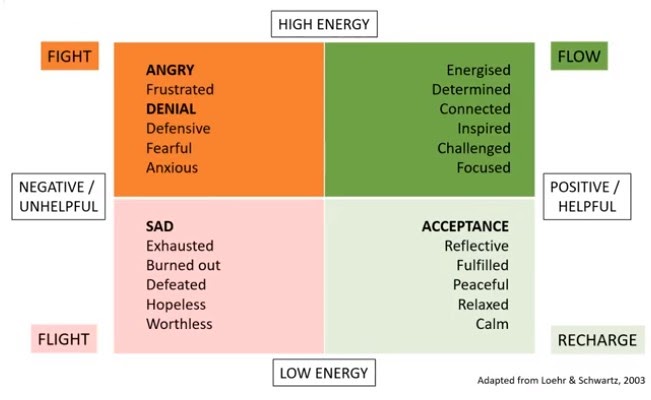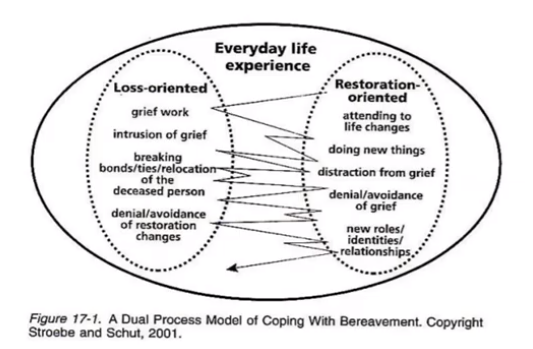Traumatic change can impact anyone, both physically and emotionally. How people respond to this change can completely differ from person to person. With the ongoing pandemic hitting the UK, most organisations have had to adjust and adapt their ways in order to support employees to better cope with extreme change.
I recently took part in a London HR Connection webinar to discuss the complex issues of supporting employees through all types of traumatic change, including bereavement, redundancy, divorce and the emotional impact of all the changes we have experienced during the COVID-19 pandemic.
Drax Group PLC
Drax Group highlighted their focus on adapting to the ‘new normal’ with their priority to protect their people, while still keeping the lights on. As an electrical power generation company based in the UK, they provide 8% of the UK’s energy, which was paramount in supporting the NHS to continue fighting the pandemic.
At times of dramatic change through trauma or sudden change, having a very clear pinpointed focus is critical to allow Drax Group to make decisions around those two key objectives within their organisation. As HR Director of Drax Group, Karen McKeever explains “Because of the simplicity of these two objectives, everyone in the organisation all understood what they were doing to achieve these goals.”
As a result of the COVID-19 pandemic, many have been thrown in the deep end with no answers. Like many others, Drax Group has had to find their own way, forcing their organisation to become agile, work quickly and even make decisions with a big sense of ambiguity.
Many organisations will agree that they have needed to adapt, particularly if they were never always on point when it comes to flexible working. For Drax Group, this completely changed overnight when they were required to adapt by allowing their teams to work from home for several months.
Karen says “Remote working has made a massive difference to the company and has boosted the trust and engagement of our people. It has certainly helped our leaders and managers to see how they could work differently. Due to strict social distancing measures, we have had to put employees on week-on week-off shift patterns for those with roles that are unable to work from home.”
Those working at Drax Group were able to pay close attention to the focus and emphasis on employee wellbeing. While they had a strong wellbeing strategy in place, they have since had to dial into ensuring the wellbeing of leaders and employees to adapt to home-working. Like many workers throughout the UK, it has become a challenge to find different ways of working to individually suit each employee best, particularly as some employees are facing difficult circumstances at home.
Their priority was to not only protect members of staff from a health perspective but to also address concerns over their wellbeing, confidence and financial situation. Drax Group utilised their healthcare provider to make sure all employees felt supported, changed learning and development options from face-to-face to virtual. For employees, this can also be a challenge as some employees may experience a lack of productivity, which can be difficult to keep track of when employers have a reduced level of oversight.
Karen and her team have supported others through the use of webinars to provide guidance for employers looking at managing their own teams through the pandemic and struggling with working arrangements. Around this, Drax Group have given managers more one-to-one support with their own leaders in managing teams.
 Premium Credit
Premium Credit
As a fin-tech company assisting customers and businesses to pay for insurances with regular instalments, Premium Credit ensures that its customers feel eased of pressure to be able to fund their necessities every month.
Premium Credit had to venture into crisis management immediately when the pandemic first shocked the world. Fortunately, they were able to decamp their entire team of over 450 people across the UK and Ireland to adjust to remote working overnight. To support employees with remote working, Premium Credit were able to replicate workspaces in the homes of their employees, using dual-screens, printers, laptops, headsets and even office chairs, to enable the replication of the office their employees felt comfortable using every day.
As Chief Operations & People Officer at Premium Credit, Josie Pileio explains that the company needed to be sure that they were able to continue serving their two million customers, who have relied on Premium Credit for financial support, which was critically important throughout the pandemic, with many workers becoming furloughed, redundant or have had their financial circumstances change.
Josie says “We have been dealing with a large number of customers who have become concerned and deeply upset by their struggles with financial difficulty and the hardship they were going through. Our role was to support them in terms of how they were going to be able to repay their loans. At the same time, we had our own teams who were experiencing worries about their own jobs and if they were being furloughed. Unfortunately, this has resulted in unavoidable stress and emotions for all involved. Everyone has been going through change, although not everyone has been going through the same change.”
The team of Premium Credit have had to navigate through a new world of working, without having their manager on-hand a few seats away from them to easily escalate a customer issue. Instead, processes took much longer and the calls they were receiving were around 400% in addition to the number of calls they usually receive.
In order to cope, Josie explains “One of the first things we did was heighten their communication and the presence of the leadership team. We needed to change everything we did without the frequency, our channels and our processes. From the very beginning, our whole approach was to step up our human interaction when we felt we needed it most, which retained the sense of togetherness we felt was really important for the team.”
They kept their teams informed along the way and kept updated with government guidelines as they went through the pandemic. To stay on track, they had weekly leadership calls, twice-daily communication emails and used Microsoft Teams as their main source of communication. Like many other companies during the pandemic, Premium Credit introduced earlier finishes on Fridays, which has become a critical method of employee engagement and retaining morale for many organisations.
 Gemma Bullivant HR Consultant & Coach
Gemma Bullivant HR Consultant & Coach
As an HR Consultant & Coach, for me, the focus has been around flexibility to adapt to changes. The foundation principles of working with grief, trauma and traumatic change relate to keeping safe as well as focusing on the emotional wellbeing, mental health and resilience. We must all build our resilience to find the ability to cope with change and the restoring of choice and control.
I often refer to choice and control in coaching across a wide range of things, although it comes up time and time again when discussing grief and change, especially when a change has been forced upon us when we feel we have had our choices and control taken away.
Following the pandemic and ramped up measures with social distancing and remote working, it’s critical to facilitate connections. Isolation is a core theme in grief, and when we experience grief or bereavement in any type, we have an instinctive habit to retreat and a tendency to isolate. A sense of restoring connection is not only important in grief but also in what we are experiencing now.
Kübler-Ross is the most well-known model of emotions and change and surfaces the importance of emotion and responses, and highlights that all individuals respond in a different way. It’s worth noting that the curve was never intended to be used for organisational change, so the linear representation is misleading and over-simplified.
For clients struggling in this space, I find it helpful to identify the emotions they’re experiencing and categorise these emotions by whether they take up a lot of energy and if they are negative or positive emotions.
Dual Process Model Of Coping With Bereavement
A helpful grief model I regularly refer to is the Dual Process Model.
It describes grief as a process of moving between two modes of functioning – the ‘loss orientation’, on the left hand side, where you focus on the emotions (usually sad, painful or difficult) associated with the loss, and the ‘restoration orientation’, on the right hand side, where you focus on the demands of reorganising your life and returning to more everyday tasks and issues.
There are two main reasons we oscillate between the two. Pragmatically, most of us have to ‘get on with things’ pretty quickly (generally too quickly), and operating in the right hand side enables us to do that. For some, the distraction can be helpful. The second reason to spend time on the right hand side is more physiological. The human body is naturally protecting us from the physical impact of grief by ‘dipping in an out’ of the intense pain.
The model demonstrates that it is normal for people to move between the two modes, sometimes paying attention to their grief emotions and sometimes paying attention (or being distracted by) other life issues.
What is relevant is to notice if we (or others) are stuck in either one mode or the other (i.e. they are either constantly stuck in the sadness of grieving, or they do not focus at all on the grief and instead attend only to moving forward), that problems can arise.
We need to experience both sides to process grief properly. We cannot expect to fully recover from grief if we avoid spending time on one or other side.
Supporting Grief, Loss & Significant Change in the Workplace
This year, we have seen an enormous increase in emotional and practical challenges for employees. Change is a form of loss and the pandemic this year has been a classic example of sudden and extreme change which has been felt by most of us, if not all.
I offer a unique range of grief, change and loss wellbeing interventions for organisations to support their employees who have experienced significant change, whether it’s a change in job security, loss of freedom, fear of the future, loss of financial security and family contact. Unfortunately, for some, this may have even been the death of a loved one.
I offer one-to-one grief, loss & redundancy coaching to guide people through physical and emotional change, whether it’s something they are experiencing day-to-day or as a result of the pandemic. I also provide live grief and loss webinars with practical tips on how best to support yourself when experiencing traumatic change. These webinars go over how change impacts us with Q&A sessions to answer any questions you may have.
For more information on how we can help, please get in touch.





